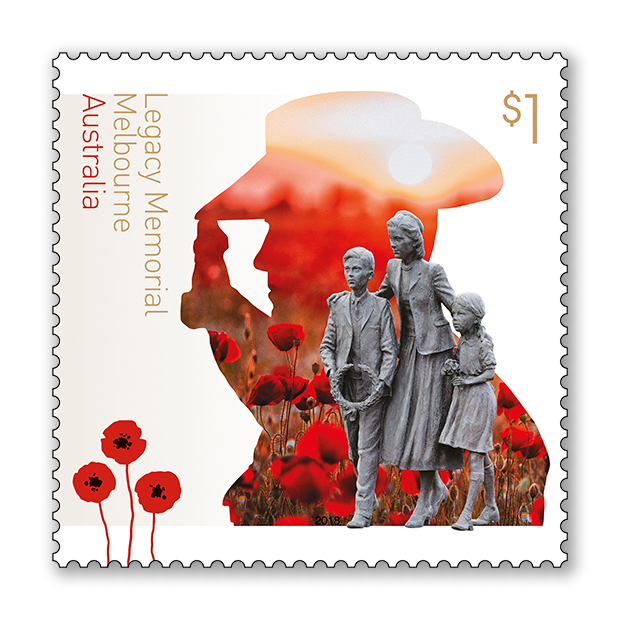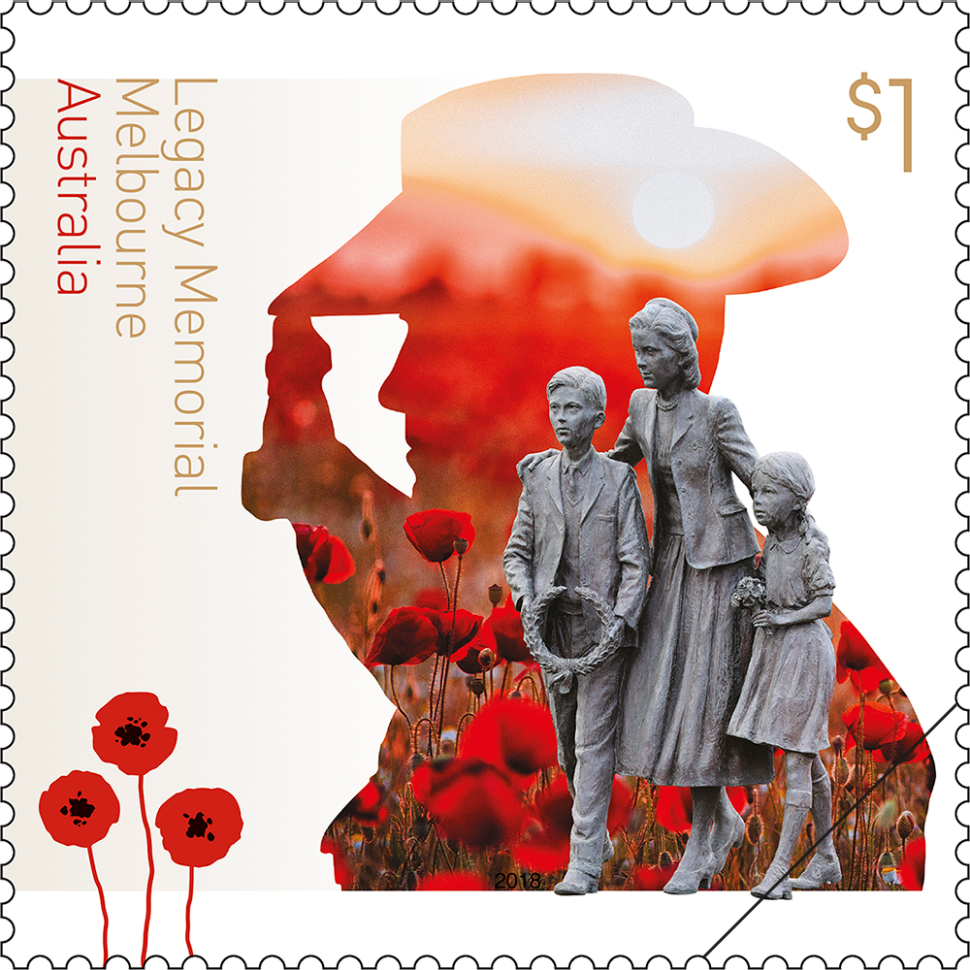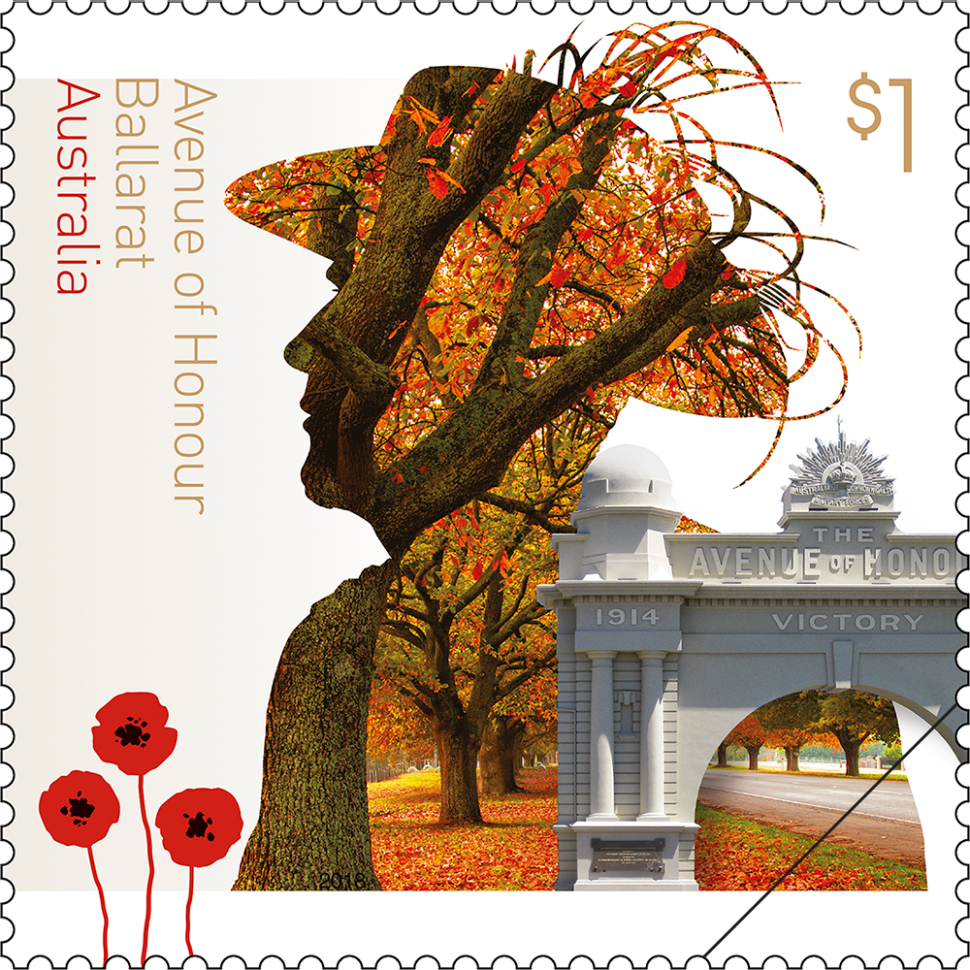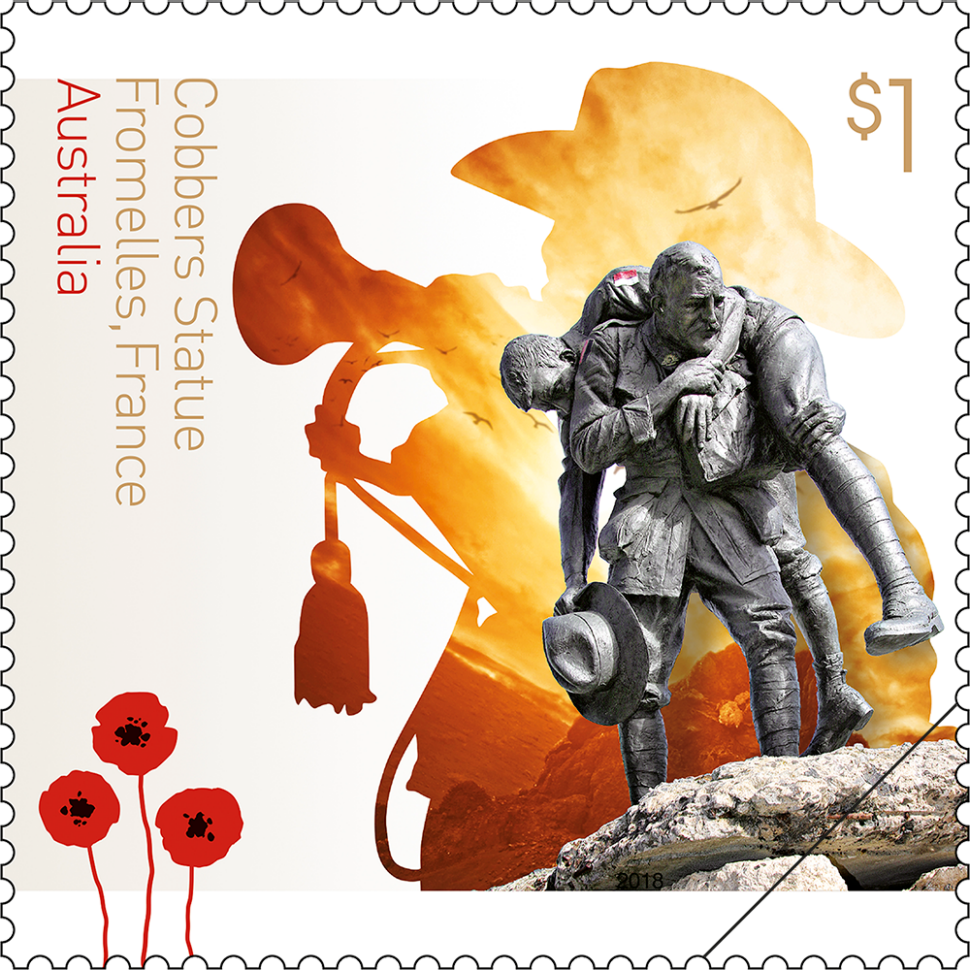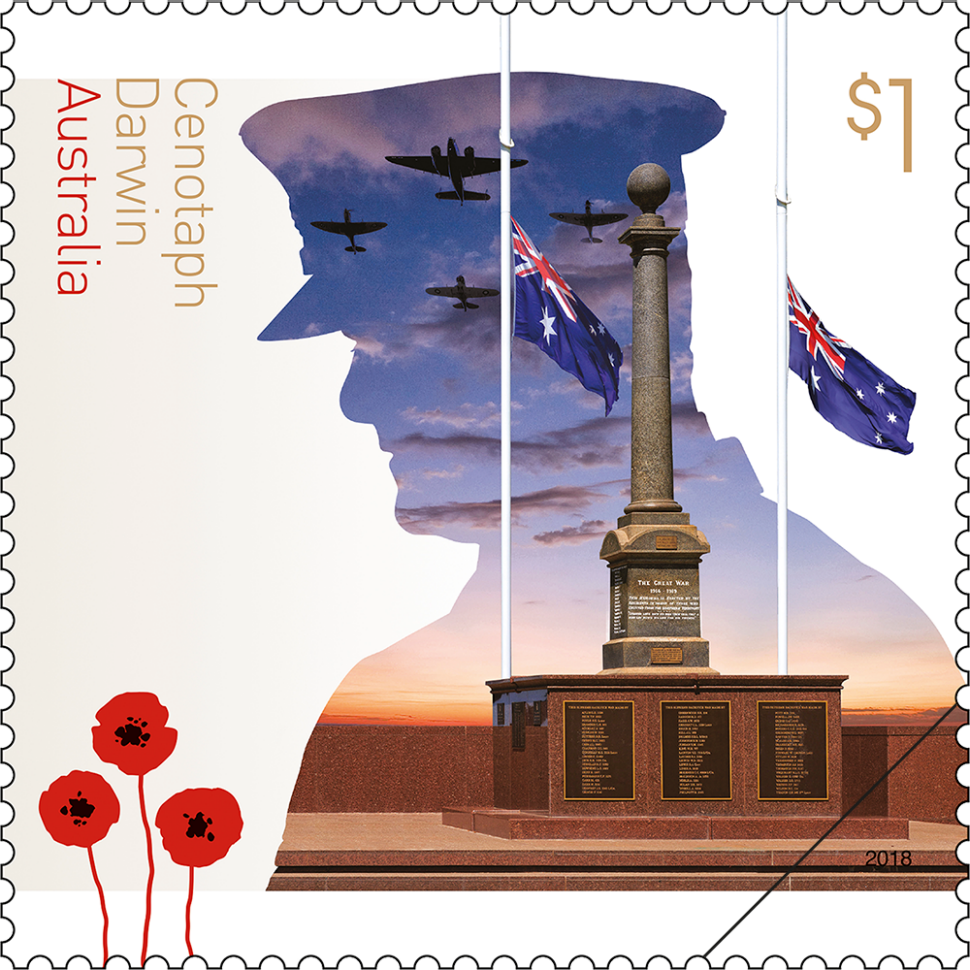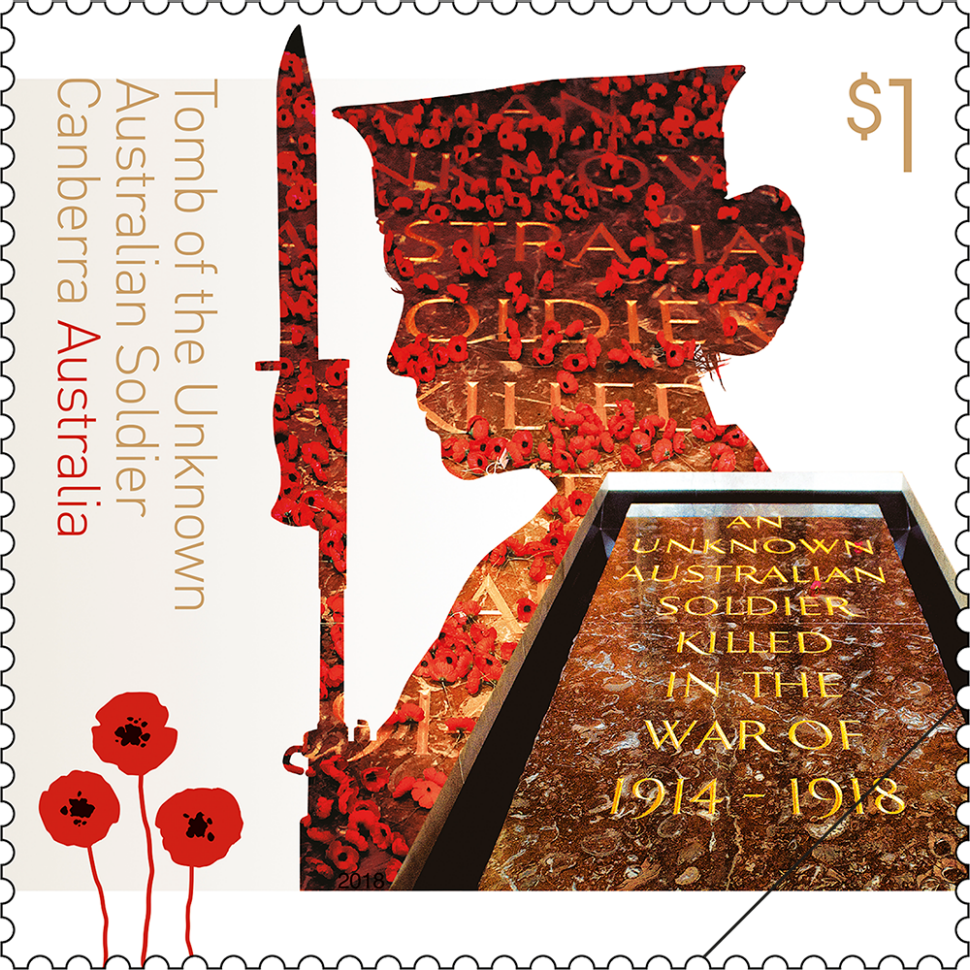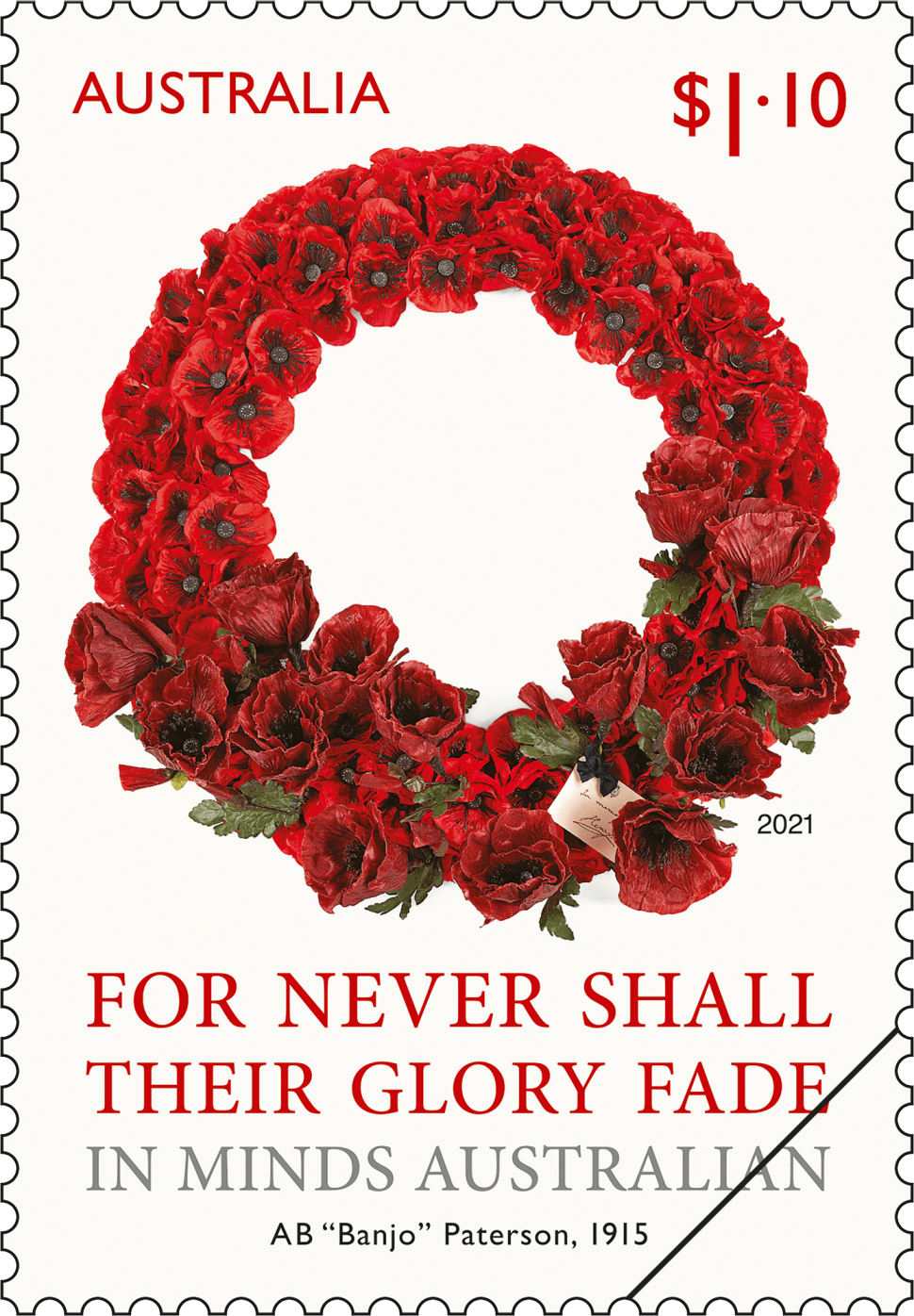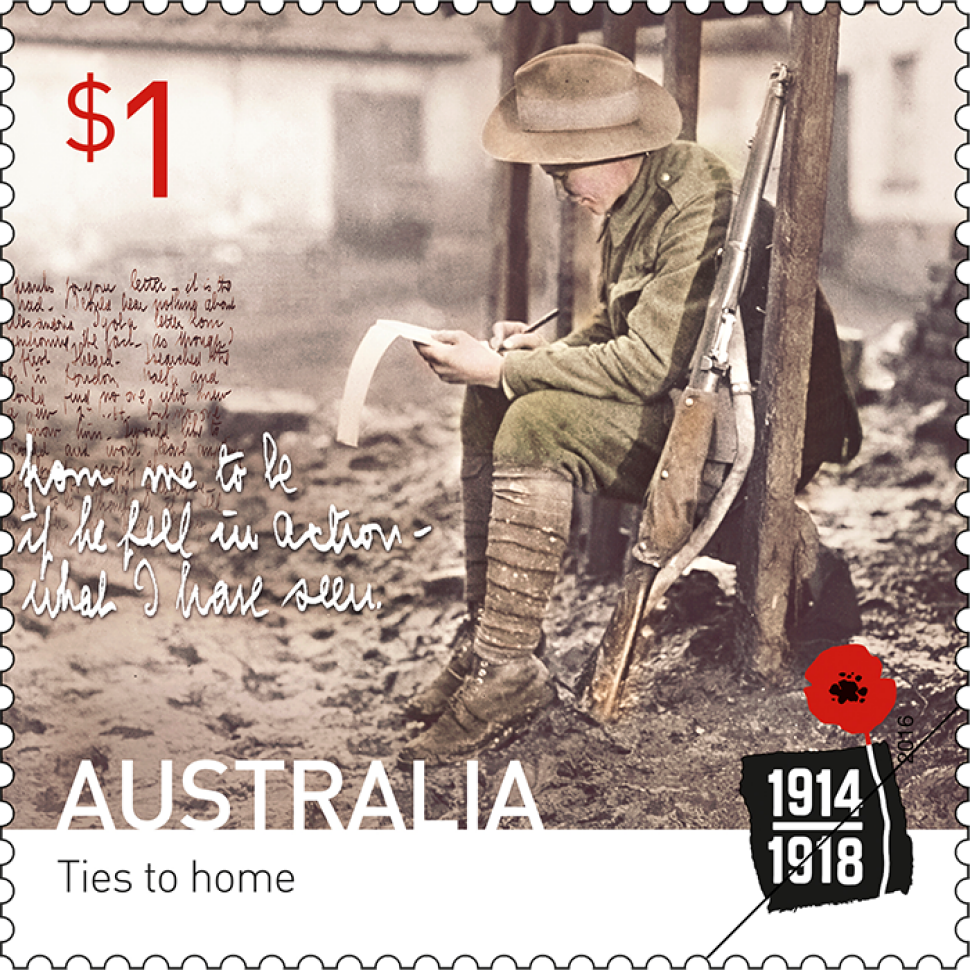War Memorials is the fifth and final stamp issue in the Century of Service stamp series. Previous issues are Tri-services (2014), War Animals (2015), Vietnam War (2016) and Women in War (2017). Each issue focuses on a different theme related to the Australian experience of war across the last century. This issue focuses on war memorials, both in Australia and internationally, and features the various forms these memorials take as well as the different ways in which they express mourning and remembrance.
The five stamps, designed by Gary Domoney of Visua, present a war memorial together with a silhouette of Australian military service personnel, namely soldiers (including a Light Horseman and a bugler), an airman and a sailor.
Products released in this issue
- Minisheet
- Stamp pack
- First day cover
- Maxicards
- Gutter designs x 5
- Medallion cover
- Postal numismatic cover x 2
- Prestige cover
- Prestige booklet
- Booklet of 10 x $1 (self-adhesive)
Technical specifications
- Issue date
- 10 April 2018
- Issue withdrawal date
- 31 October 2018
- Denominations
- 5 x $1
- Stamp design
- Gary Domoney, Visua
- Product design
- Gary Domoney, Visua
- Printer
- RA Printing
- Paper - gummed
- Tullis Russell Red Phosphor
- Paper - self-adhesive
- SecurePost MC90
- Printing process
- Offset lithography
- Stamp size
- 35mm x 35mm
- Minisheet size
- 170mm x 80mm
- Perforations
- 14.28 x 14.28
- Sheet layout
- Module of 50
- FDI postmark
- Canberra ACT 2600
- FDI withdrawal date
- 9 May 2018
Legacy is a voluntary organisation supported by veterans, servicemen and women, and volunteers, providing services to approximately 65,000 families of veterans who have died or been incapacitated by their military service. Its origins can be found in WWI and the difficulties that many soldiers experienced on their return to Australia. General Sir John Gellibrand founded the Remembrance Club in Hobart to assist returned servicemen in business. One his staff members, Stanley Savige, founded a similar club in Melbourne, and Legacy evolved from these initial clubs. The memorial statue Widow and Children, commissioned by Legacy in 1988 and sculpted by Louis Larmen, represents an ongoing memorial to the impact of war on those who serve in them and those who bear the scars of conflict at home. The poppies that bloom in the garden in which it is located are from seeds taken from around Villers-Bretonneux in France.
A distinctly Australian memorial, an avenue of honour is a memorial avenue of trees. There are 547 known avenues of honour in Australia and the Ballarat Avenue of Honour is famous for being the longest and one of the earliest known memorial tree plantings of its type. It also represents an egalitarian approach to the commemoration of service personnel where service rank was not a consideration. It incorporates the Ballarat Arch of Victory and extends for approximately 22 kilometres. In total, the trees represent 3,912 Ballarat and district men and women who served in WWI – 528 of whom were killed in battle or died of wounds or disease. The tree plantings, commenced before the end of WWI and located along the Western Highway, were in the order of service personnel enlistment.
Cobbers, sculpted by Peter Corlett, is located in the Australian Memorial Park at Fromelles in northern France. It shows Sergeant Simon Fraser, 58th Battalion, carrying in a wounded man on his back. The word “Cobber” was used by Fraser in a 1916 letter describing his rescue of two men: “Then another man about 30 yards out sang out, ‘Don’t forget me, cobber’. I went in and got four volunteers with stretchers, and we got both men in safely.” The Battle of Fromelles, on 19 July 1916, was the first action for Australians on the Western Front and was disastrous, regarded as the worst 24 hours in Australian military history. There were more than 5,500 Australian casualties, 500 prisoners of war were taken and almost 2,000 soldiers were dead. In one night at Fromelles the Australian casualties were equivalent to those in the Boer, Korean and Vietnam Wars combined. A replica of Cobbers, also created by Corlett, is located in the Shrine of Remembrance precinct in Melbourne. The digger soldier also became a widely used motif for many regional memorials across Australia.
The Darwin Cenotaph commemorates Australian servicemen and servicewomen who have served in all the conflicts in which Australia has been involved since it was originally erected in 1921 to commemorate those who served in WWI. The memorial overlooks Darwin Harbour where so many died during the Japanese air attack on 19 February 1942. It is located on the site where the guns of the 14th Anti-Aircraft Battery were positioned and fired the first shots in defence of Australia on Australian soil during WWII. When it was dedicated on 24 April 1921, it was the first official monument of any kind erected in the Northern Territory. It has survived cyclones, earth tremors, bombs and several relocations.
The Tomb of the Unknown Australian Soldier, located in the centre of the Australian War Memorial (AWM) in Canberra, is the national focus for remembering all Australian servicemen and servicewomen who have died in wars. It bears the simple inscription “An Unknown Australian Soldier Killed in the War of 1914–1918” and is a symbolic representation of all the Australian soldiers whose bodies were never recovered, were never returned home and which lie in the ground far from their home. More than 23,000 Australians killed in WWI have no known grave. Except for their nationality, they could not be identified, and were buried beneath headstones bearing the words “An Australian soldier of the Great War, known unto God”.
On 11 November 1993 – the 75th anniversary of the Armistice that ended fighting on the Western Front – the remains of an unknown Australian soldier who died on the Western Front, were interred in the Hall of Memory at the Australian War Memorial. In the eulogy delivered by then Prime Minister Paul Keating at that ceremony, he said, “We do not know this Australian’s name and we never will. We do not know his rank or battalion. We do not know where he was born, nor precisely how he died ... We will never know who this Australian was ... [H]e was one of the 45,000 Australians who died on the Western Front ... one of the 60,000 Australians who died on foreign soil. One of the 100,000 Australians who died in wars this century. He is all of them. And he is one of us.”
This content was produced at the time of the stamp issue release date and will not be updated.

